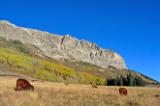Conservation Economics
The Conservation Economics Program (CEP) at Defenders of Wildlife implements on-the-ground research projects designed to identify and value the benefits of wildlife habitat restoration and conservation on agricultural and ranch lands.
The CEP staff publishes findings related to the valuation of ecosystem services, the objective and transparent economic analysis of the benefits and costs of biodiversity conservation, and the design of economic incentives for wildlife conservation.
CEP is committed to
- designing conservation programs that connect valuation information to incentive levels;
- providing assistance to structuring ecosystem service markets that maintain biodiversity values; and
- advancing the use of well-designed ecosystem service markets and payments to achieve conservation objectives.
CEP Projects
-
Wildlife Habitat Benefits Toolkit
by Mike McQueen
What's the value of undeveloped land? The toolkit just released by Defenders of Wildlife offers land trusts, land-use planners, wildlife managers, and public policymakers the means for answering one of land conservation's thorniest questions. -
The Economic Benefits of Conserving Land: Mount Agamenticus, Maine
by Defenders of Wildlife
The natural systems of Maine's Mount Agamenticus region provide an annual economic value of between $5.3 million to $6.4 million to local communities, according to an analysis by Defenders of Wildlife's Conservation Economics Program. -
Red Wolf Ecotourism in North Carolina
by Defenders of Wildlife
First reintroduced to northeastern North Carolina in 1987, about 100 to 120 red wolves now roam in the wild. A 2005 study found that the red wolf and wildlife may increase tourism throughout the rural "Inner" Banks region.




